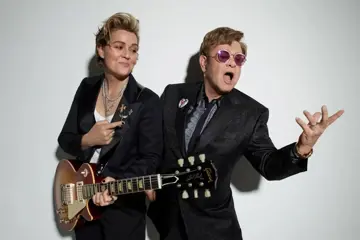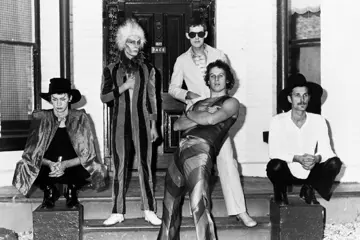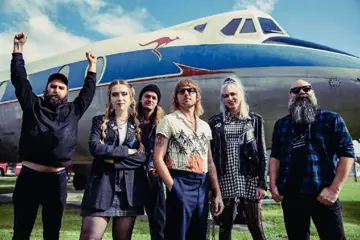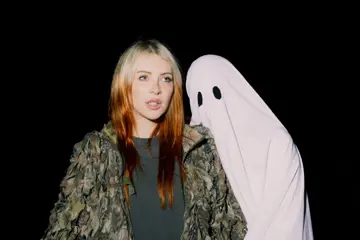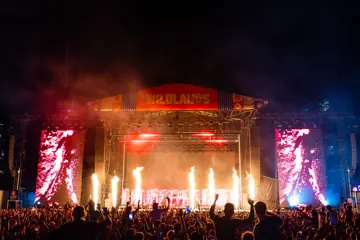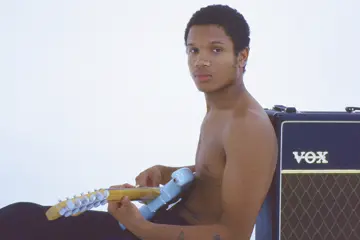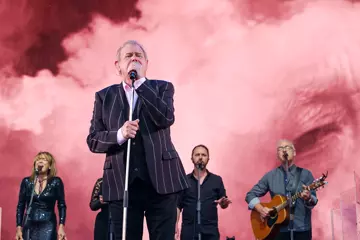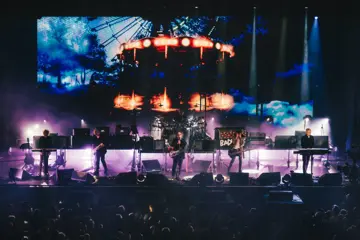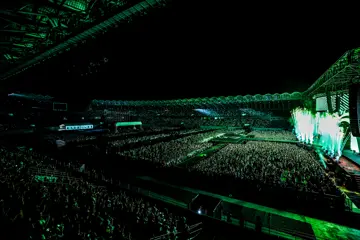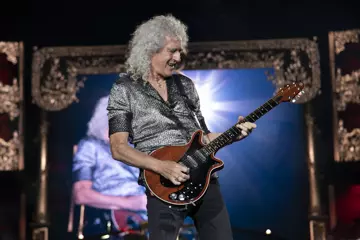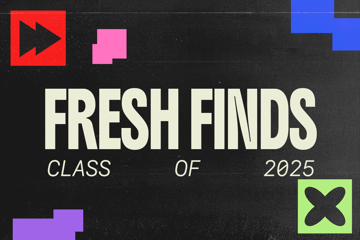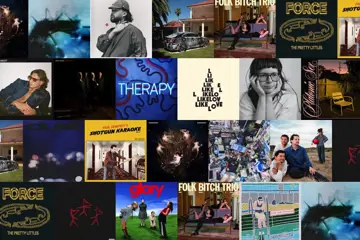TRIPLE 9

There are guns everywhere in Triple 9. Guns laid in the laps of drivers, tucked in waistbands, hidden in socks, piled in the boots of cars, strapped to the bodies of men at work. They’re held by cops, criminals, kids in the hood; wielded in defiance, defence, attack, robbery, execution. But they’re not there just for show: there’s a Chekhovian simplicity, a balance and counter-balance, to the way it shows guns, then gunfire. If a group of armed ex-military contractors and crooked cops enact a bank heist holding semi-automatics, you know full well they’ll be using them; weapons discharged, glass flying, car-doors dented, the whoosh and hiss of bullets blowing through the soundtrack.
The ex-military men are stern Chiwetel Ejiofor, greasy Norman Reedus, and drunk Aaron Paul; their partners-in-crime the dirtiest of dirty cops, dickish Anthony Mackie and sinister Clifton Collins, Jr. The heist they pull off opens the movie, the opening-credits throwing the audience straight into the action. Our crew’re doing the job on behalf of a Russian Jewish crime syndicate whose matriarch is a platinum-bleached, r-rollin’ Kate Winslet, obviously revelling in her first turn as straight-up villain. Ejiofor is literally in bed with the mob, married to scantily-clad Gal Gadot, who’s Winslet’s sister. They have a kid together, and, thus, Ejiofor is the noble criminal: doing one last job for his son!
On their trail is Casey Affleck’s non-crooked cop, a fresh-faced, by-the-book detective whose virtue ruffles his original-odd-couple partner: the two-faced Mackie (dramatic coincidence!). Affleck’s uncle happens to be his boss, drunken Woody Harrelson, channelling his True Detective days as he sinks drinks, chews scenery, and busts heads. There’s piles more police (oz-soap-factory graduate Michelle Ang impressing in a small role as crack researcher), moral quandaries, this-time-it’s-personal coincidences, and endless double crosses. The bonkers cast of famous-faces means you can, largely, keep track of all the shifting allegiances and tangled-up characters, but in reality this celebrity cast has largely been assembled so they can all be killed. Befitting a film filled with guns, most every character ends up getting shot.
Don't miss a beat with our FREE daily newsletter
The one thing Triple 9 has going for it is that it’s aware of its violence, of the trauma it unleashes. It’s not another mindless action film in which the gunfire is like game-playing, guns carry no thematic weight. Screenwriter Matt Cook is clearly out to author some kind of portrait of America. The film is set in one of America’s blackest big cities, Atlanta, with racial tensions underpinning so many exchanges. And the presence of Russian and Israeli criminals suggests the dark side of globalisation, and the ‘above the law’ ways in which cartels and corporations, both, can blithely skirt laws.
Given it’s the work of an Australian director, John Hillcoat, there’s an outsider’s perspective to the picture; all the guns on hand an unflattering portrait of America’s obsession with weapons. Hillcoat’s work this century has been about battles for power and desperate survival on the fringes: in frontier Australia (The Proposition), post-apocalyptic wastelands (The Road), and Prohibition-era rural America (Lawless). Triple 9 plays far more like a straight action movie than any of its predecessors, but it, too, is about desperate people in dire straights; about the rules of society falling away, the horrors of humanity that’re revealed by acts of cruelty and violence.
Ideally, that level of cultural critique would come across in the film; Hillcoat being able to mount a portrait-of-America somewhere in the neighbourhood of Andrew Dominik’s criminally-underrated crime-movie-as-capitalist-satire Killing Them Softly. But, instead, Triple 9’s critique feels buried beneath the tropes of genre; its violence just more gun-death entertainment. To Australian audiences, its parade of guns will look horrifying, but in America, all the weaponfire will seem like cinema-as-usual; just another loving shrine to the deathly glories of the Second Amendment.
VICTORIA

Victoria is a different kind of heist movie. It’s an utterly singular film memorable for its singular device. Which is, a singular take. Consisting of one unbroken 140-minute shot, Sebastian Schipper’s film is a work of balletic choreography, a cinematic high-wire act whose logistics are a constant marvel. It introduces us to its titular character (Laia Costa) in the strobing throb of a late-night Berlin techno dive. She encounters a crew of drunken German dudes (Frederick Lau, Franz Rogowski, Burak Yigit, Max Mauff), and they wander through the empty streets, enacting wasted hijinks. There’s a macho aggressiveness amongst the men, but Costa is clearly unafraid, independent, feisty; she’s just as happy to break the rules of polite society as they.
Without an edit, these rambling sequences have a sense of vérité, and, for the first 45 minutes, what we essentially have is a portrait of drunken bonding. By investing so much time in the humanity of the picture —in presenting characters acting naturally in recognisable situation— Schipper fashions an emotional core that will pay-off, heartily, once the tropes of genre arrive.
When they do, they seem small-scale, low-stakes; the guys merely asking Costa if she’ll drive them for a ‘job’. But, oh, how it’s the start of a slippery slope; the film having the slow, steady descent of a noir-movie, its lead character, once she takes her first tentative step over to the dark side, soon sinking in moral quicksand, unable to escape a scenario growing worse with each passing minute.
In contrast, as the camera keeps rolling the sun starts to come up, bringing great visual/symbolic clarity to what, exactly, Costa has got herself into. It’s a sublime piece of scheduling, natural light essentially playing an active role in the film; this likely the only heist-movie that could be compared to Carlos Reygadas’s spiritualist long-takes in Silent Light. That you notice the light and the logistics doesn’t detract from the film; in fact, it only adds to it. Victoria doesn’t succeed at twin tasks —as technical feat and genre movie— but brings them together, blurring the line between production and drama with a genuine sense of theatre.
THE BOY AND THE BEAST

Mamoru Hosoda was the director behind two of the greatest anime films —hell, two of the greatest films— of the ’00s: 2006’s heartaching, time-hopping teen romance The Girl Who Leapt Through Time, and 2009’s bonkers, world-shifting meta-narrative Summer Wars (and then came 2012’s secretly-profound Wolf Children, which is a whole other story). His latest film, The Boy And The Beast, initially seems like it’s going to be a minor work, especially in comparison. It finds an angry nine-year-old runaway disappearing down a rabbit-hole into a mythical kingdom of anthropomorphised beast-men. There, he becomes the disciple of a kendo master fighting to be named lord of the land; and, lo, training montages and martial-arts moves and building-toward-a-big-showdown ensue.
But then comes one of Hosoda’s signatures: a profound passing-of-time sequence, in which a sparring fight on a hillside —animated sunlight bleeding into lens— between master and pupil finds years passing in the blink of a sun-blinded eye. And, in turn, The Boy And The Beast changes, and grows, with it. Its lead tyke is now 17 years old, yearning to return to the human world; to know more beyond sparring. When he returns to Tokyo, the film becomes a coming-of-age romance; and the re-establishing of this second world —and the emotional weight of it— multiplies the possibility and potential for the film. In its final act, it bounces between the twin worlds, then brings them together. When the eventual showdown comes, it’s unexpected, and amazingly-animated: the spectral energies of fantasy colliding with realist depictions of modern-day Shibuya in a spectacle that reminds you that Hosoda’s ‘visionary’ status is well-earned.

